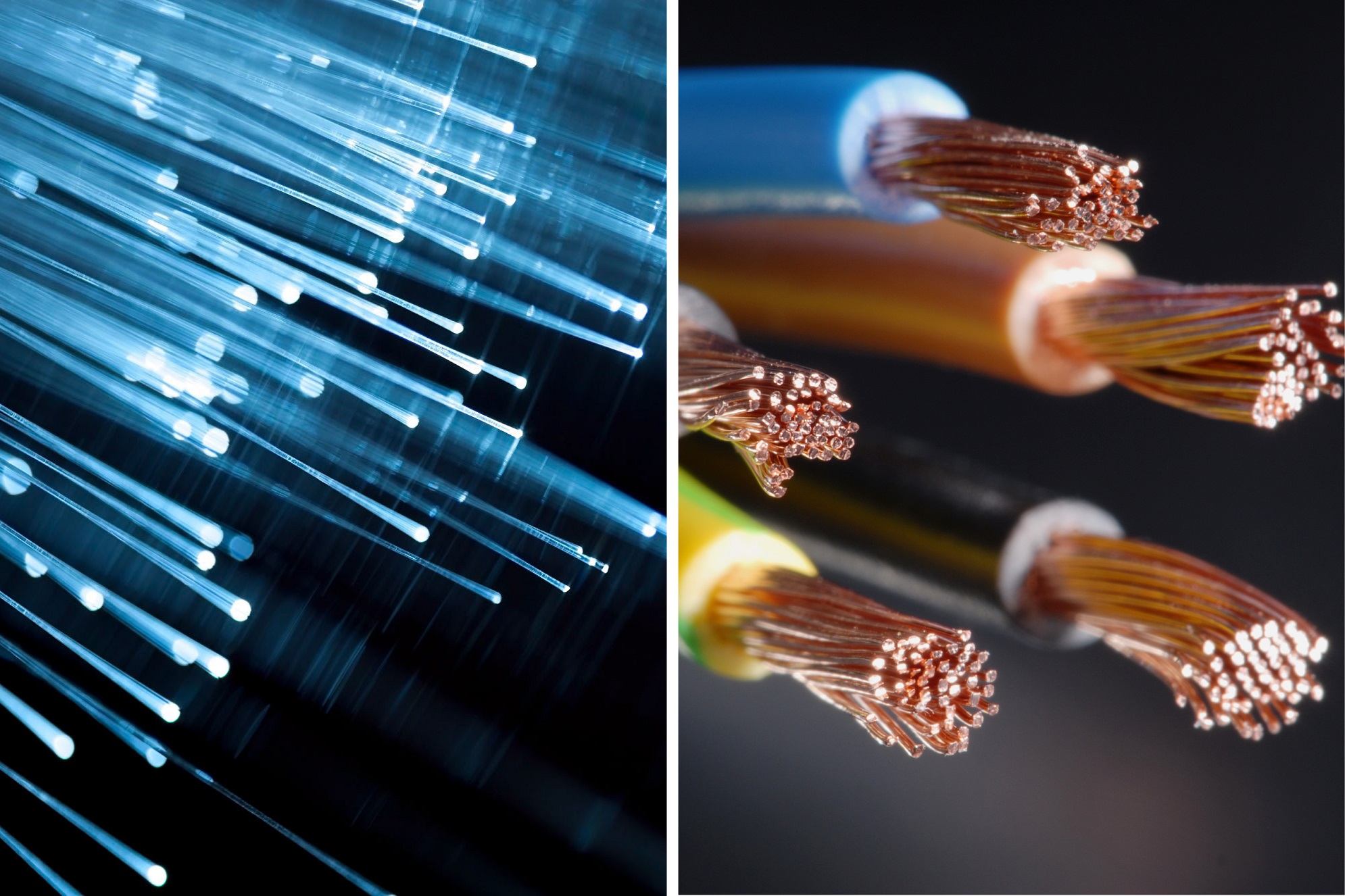What is the difference between fibre cable and traditional cable?
Fibre allows for high-speed connections for internet, television, and telephones. But how does it work and how does it compare to traditional cable?
Fibre is something we often hear when we talk about connectivity technology. It is used in a wide range of applications, such as high-performance data networking, data storage, and in telecommunication services. Fibre allows for high-speed connections for internet, television, and telephones. But what is it exactly, and how does it work?

What is fibre cable?

Fibre refers to optical fibres. The anatomy of an optical fibre begins with its core which is composed of a piece of glass or plastic about the size of a strand of human hair. This core is then surrounded by a cladding layer and additional coatings for protection.
Data is transmitted with light signals reflected along the core of the fibre. The concept of optical fibres is to use total internal reflection of the light signal, which allows the light path to be reflected along the length of the fibre, while minimizing or eliminating light signal loss, also known as refraction.
Although optical fibre has been around for some time, it first came into operation in the mid-1970s when GTE (formerly known as General Telephone and Electronics) tested and ran the world's first live telephone traffic through a fibre optic system in Long Beach, California in 1977.
There are two common types of optical fibres - single-mode and multi-mode. A mode is a defined path that a ray of light can travel. In single-mode there is one mode and in multi-mode there are many modes. Single-mode uses a laser light source, has "unlimited" bandwidth, and can be used for long distances. Multi-mode uses a LED light source, has limited bandwidth, and is used for shorter distances.
Optical fibre cables are a structure designed to protect one or more optical fibres. Cable designs vary on their application and level of protection required. These cables generally have a buffer tube or tubes made of thermoplastic material containing the optical fibres. These are then used along with a strength member, protective elements such as aramid yarns or metallic tape, and a final protective jacket. The important considerations in cable design are protection, material compatibility and size reduction.
There are several advantages of using optical fibre. These include high transmission capacity, data security, low signal attenuation, and no electromagnetic interference. They are suitable for various applications including overland, underground, overhead, and underwater.
The most common variation of fibre is fibre to the cabinet (FTTC). This uses connectivity technology based on fibre and copper cable. Optical fibre is in place from the local telephone exchange to a distribution point—the green cabinet found on a street. From here, the copper cables are used to deliver broadband connectivity.
Some providers offer fibre to the premises (FTTP) or fibre to the home (FTTH), which removes the need for copper cables. FTTP or FTTH offers a full fibre connection from the exchange to your business or home, providing much faster internet speeds.
This variation of fibre optic cable is more stable and delivers higher internet speeds no matter the cable run distance. This is often referred to as Ultrafast Full Fibre Broadband.
How does it differ from traditional cable?

Fibre transmits an optical signal and traditional cables, using metal materials, transmit an electrical signal.
Traditional cable can be coaxial cables that are specially designed and shielded so that they do not have the same level of loss as traditional telephone cables over long distances.
Coaxial is so-called because it includes one physical channel that carries signal, which is encased by a layer of insulation, and surrounded by another physical channel. Both channels run along the same axis.
Coaxial cables have a copper core, which is insulated with aluminium, a copper shield, and an outer plastic sheath. However, they are more susceptible to extreme cold, storms, and electromagnetic interference because they use electrical signals.
Fibre is used because it allows for electrical immunity. The cables perform at faster speeds while carrying more data than copper over the same distance. Along with higher performance, fibre optic cables can be produced smaller and lighter than copper cables with lower costs.
Prysmian telecoms: linking the future
Prysmian is the world’s largest provider of cutting-edge telecom cables, linking people to voice, video and data transmission. We are at the heart of a network of world-leading telecom operators. From optical fibre and copper cables to connectivity components and accessories, we’re helping to link communities, continents, and countries faster and more efficiently than ever before.
Our global presence, combined with our experts’ regional knowledge, mean we’re uniquely placed to support the needs of every customer. Whether that’s manufacturing high-performance and cost-effective data cables within tight lead times, or offering specialised network solutions which enable high-speed connectivity in the core network, within datacentres, or at the edge, our expert knowledge and high-quality products can deliver the perfect solutions for you.
Recently, Prysmian Group announced an extension to its partnership with Openreach—the UK’s largest digital network business—with a three-year contract. We will be providing innovation and expertise to fully support Openreach’s updated Full Fibre broadband build plan, which contributes massively to the government’s target of delivering ‘gigabit cable broadband’ to 85 per cent of the UK by 2050.
We provide pioneering global opportunities for industries and communities. Find out more about Prysmian Group’s Telecom cables and solutions.



